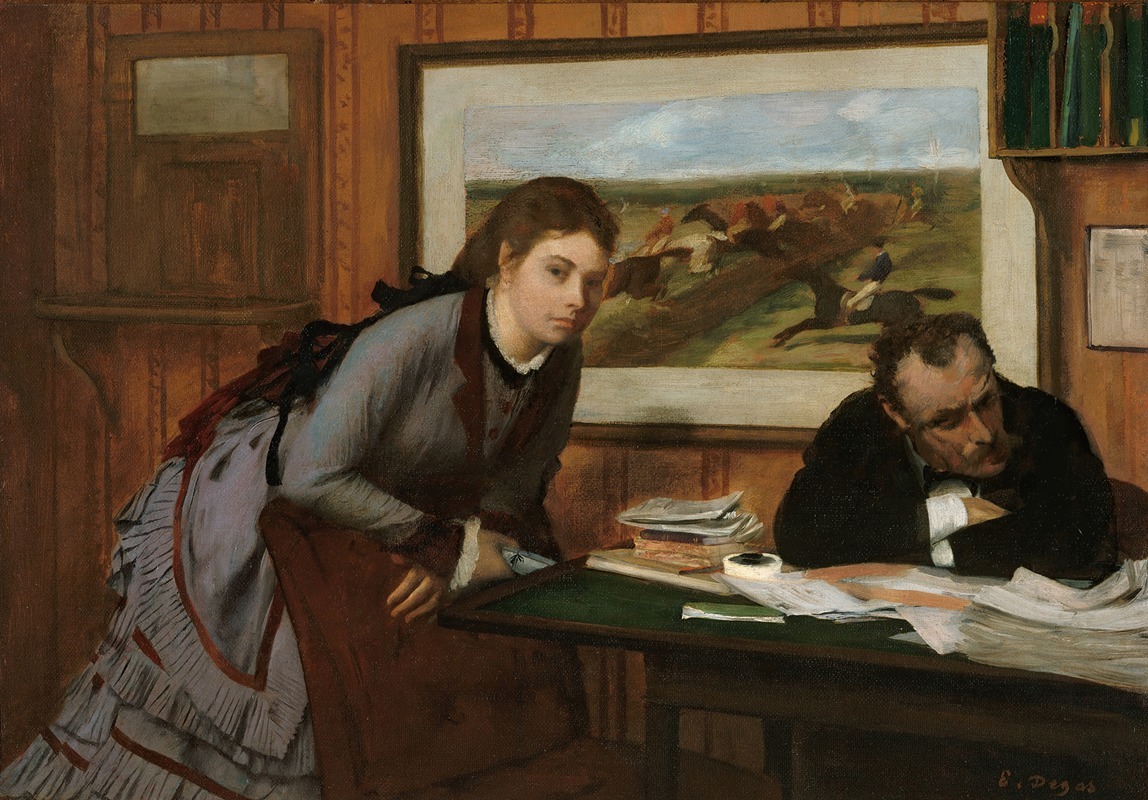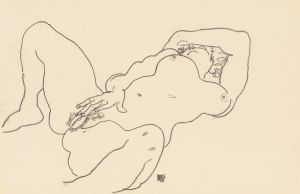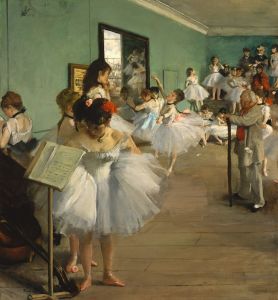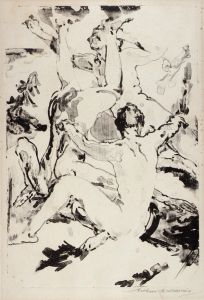
Sulking
A hand-painted replica of Edgar Degas’s masterpiece Sulking, meticulously crafted by professional artists to capture the true essence of the original. Each piece is created with museum-quality canvas and rare mineral pigments, carefully painted by experienced artists with delicate brushstrokes and rich, layered colors to perfectly recreate the texture of the original artwork. Unlike machine-printed reproductions, this hand-painted version brings the painting to life, infused with the artist’s emotions and skill in every stroke. Whether for personal collection or home decoration, it instantly elevates the artistic atmosphere of any space.
Edgar Degas, a prominent French artist associated with the Impressionist movement, is renowned for his paintings, sculptures, prints, and drawings. His work often captures scenes of contemporary life, with a particular focus on dancers, women at work, and intimate moments. One of his lesser-known works is "Sulking," which, like many of Degas' pieces, reflects his keen observation of human behavior and emotion.
"Sulking" is a painting that exemplifies Degas' interest in capturing candid, unguarded moments. The artwork portrays a woman in a moment of introspection or discontent, a theme that resonates with Degas' broader exploration of the human psyche. His ability to depict such moments with sensitivity and depth is a hallmark of his artistic style.
Degas was known for his innovative use of composition and perspective, often employing unusual angles and cropping to create a sense of immediacy and intimacy. In "Sulking," this approach is evident as the viewer is drawn into the personal space of the subject, enhancing the emotional impact of the scene. The painting's composition guides the viewer's eye towards the central figure, emphasizing her mood and expression.
The color palette in "Sulking" is typical of Degas' work, characterized by muted tones and subtle contrasts. This choice of colors not only reflects the somber mood of the subject but also highlights Degas' mastery of light and shadow. His technique often involved layering pastels or oils to achieve a rich, textured surface, adding depth to the scene.
Degas' interest in capturing everyday moments was influenced by his contemporaries and the changing art scene in Paris during the late 19th century. The rise of photography and the Impressionist movement's focus on modern life encouraged artists like Degas to explore new subjects and techniques. "Sulking" fits within this context, as it presents a slice of life that is both ordinary and profound.
While Degas is often associated with his depictions of ballet dancers, "Sulking" demonstrates his versatility and ability to convey a wide range of human emotions. His attention to detail and the psychological depth of his subjects set him apart from many of his peers. This painting, like much of Degas' work, invites viewers to reflect on the complexities of human emotion and the moments that often go unnoticed.
"Sulking" is a testament to Degas' skill as an observer and interpreter of human nature. His ability to capture the subtleties of mood and character continues to resonate with audiences today. Although not as widely recognized as some of his other works, "Sulking" remains an important piece within Degas' oeuvre, illustrating his commitment to exploring the intricacies of everyday life.
In summary, Edgar Degas' "Sulking" is a compelling example of his ability to depict intimate, emotional moments with nuance and depth. Through his innovative use of composition, color, and technique, Degas captures a scene that is both personal and universal, reflecting his enduring legacy as a master of modern art.


















